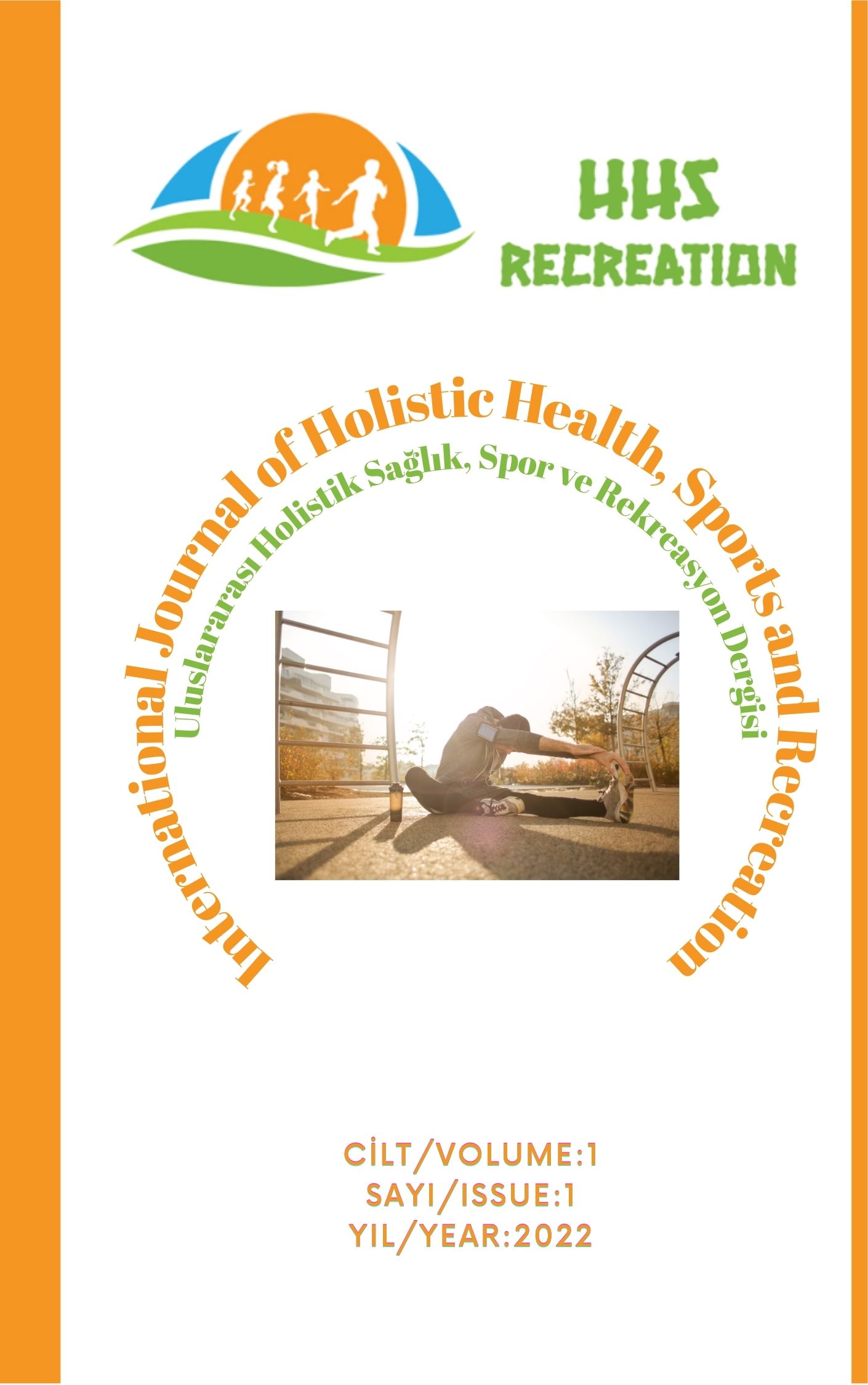Investigation of Risk Take and Quality of Life of Individuals Who Do Extreme Sports
DOI:
https://doi.org/10.5281/zenodo.7487688Keywords:
Extreme sports, risk taking, quality of lifeAbstract
The aim of this study is to examine the risk taking and quality of life levels of individuals engaged in different extreme sports according to different variables. The study group consisted of 175 participants, 156 (89.1%) men and 19 (10.9%) women, who had at least one competition experience in the Eastern Anatolia region. As a data collection tool, the personal information form created by the researchers (age, gender, year of doing sports, number of children, for what purpose do you do sports) was first used by Weber et al. to measure risk-taking behaviors in people. (2002) and the short form of Blais and Weber (2006) was prepared by Dinç and Tez (2019), the Turkish validity and reliability study "DOSPERT (A The "World Health Organization Quality of Life Scale-Short Form Turkish Version" consisting of general physical, psychological, social and environmental sub-dimensions, developed by Eser et al. (1999), was used. In the analysis of the data, since it was seen that the normality test did not show normal distribution, the Mann Whitney-U test was used for pairwise comparisons from non-parametric tests, and the Kruskal Wallis H test for more than two comparisons. In the results of the research, there was no significant difference in risk taking and quality of life sub-dimensions according to the variables of gender and for what purpose you do sports (P>0.05). According to the age variable, a significant difference was observed in favor of the 18-30 age group, social and financial, among the sub-dimensions of risk taking (p<0.05). According to the number of children, there was a significant difference in favor of those who did not have children in risk-taking sub-dimensions, social, financial and recreational (P<0.05). As a result, it can be said that the quality of life of those who do extreme sports increases as the number of years and age increases, and there is a decrease in risk taking.
References
Blais, AR, ve Weber, EU. (2002). Testing invariance in risk taking: a comparison between anglophone and francophone groups, Scientific Series, 25, 1-28.
Blais, AR, ve Weber, EU. (2006). A Domain-Specific Risk-Taking (DOSPERT) scale for adult populations. Judgment and decision making, 1, 33-47.
Demirhan, G., AŞÇI, F. H., Kangalgil, M., ve Saraçbaşı, O. (2014). Perception of Risk and Attractiveness of Extreme Sports Among Turkish University Students. Spor Bilimleri Dergisi, 25(1), 11-22.
Dinç. S.C., ve Tez, Ö.Y. (2019). Alana Özgü Risk Alma Ölçeği- Kısa Formu’nun (DOSPERT-30) Türkçe Uyarlaması, Spor Bilimleri Dergisi / Hacettepe Journal of Sport Sciences, 30 (3), 107-120
Dinç. S.C., ve Tez, Ö.Y. (2021). Macera Rekreasyonu Katılımcılarının Risk Alma Davranışlarında Farklılık Yaratan Değişkenlerin İncelenmesi, Int J Sport, Exer & Train Sci, Vol 7(4), 203–219
Eser, E., Fidaner, H., Fidaner, C., Eser, S. Y., Elbi, H., ve Göker, E. (1999). WHOQOL-100 ve WHOQOL-BREF'in psikometrik özellikleri [The psychometric properties of WHOQOL-100 and WHOQOL-BREF]. Psikiyatri Psikoloji Psikofarmakoloji (3P) Dergisi, 7(2), 23-40.
Immonen, T., Brymer, E., Orth, D., Davids, K., Feletti, F., Liukkonen, J., & Jaakkola T. (2017). Understanding action and adventure sports participation-an ecological dynamics perspective. Sports Medicine-Open, 3(18), 1-7.
Karasar, N. (1994). Bilimsel araştırma yöntemi: Kavramlar, ilkeler, teknikler. Anı Yayıncılık.
McVeigh, S.A., Hitzig, S.L. & Craven, B.C. (2009). Influence of sport participation on community integration and quality of life: A Comparison between sport participants and non-sport participants with spinal cord injury. J Spinal Cord Med., 32(2),115-124.
Moore, S., & Gullone, E. (1996). Predicting adolescent riskbehavior using a personalized cost-benefit analysis. Journal of Youth andAdolescence, 25(11), 343-359.
Skevington, S.M., Loftly M. & O’Connell K.A. (2003). The World Health Organization’s Whoqol-Bref Quality of Life Assesment: Psychometric properties and results of the international field trial a report from The WHOQOL Group. Quality of Life Research 13, 299-310.
The Spine in Extreme Sports By Kenneth P Burres MD. (2009). [homepage on the Internet]. [Updated: March 03 2009] Available from: www.fitcentric.com/ download/Spine %20in%20Extrm%20 Sports_10_03.pdf Aktaran: Şimşek.K.Y. (2010). Dünya Spor Endüstrisinde Ekstrem Sporların Gelişimi ve Yeri, BESBD 2010;5(1). 21-27.
Downloads
Published
How to Cite
Issue
Section
License
Copyright (c) 2022 International Journal of Holistic Health, Sports and Recreation

This work is licensed under a Creative Commons Attribution 4.0 International License.



